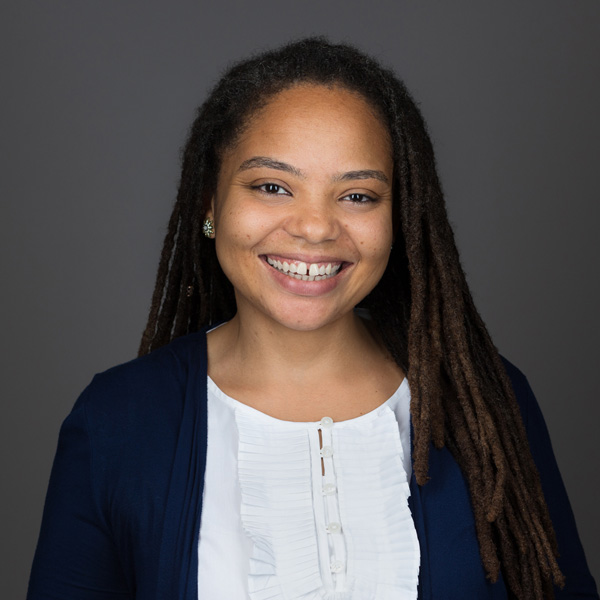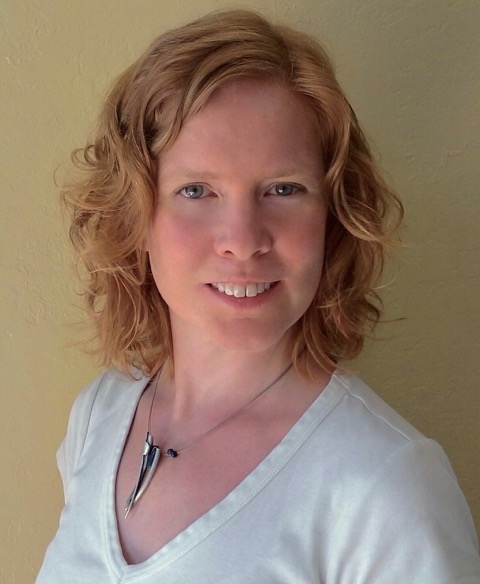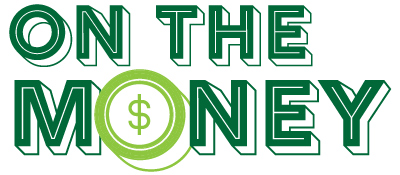Jake Blumgart remembers that when he worked for WHYY in Philadelphia, his fellow reporters talked about their low pay “almost constantly.”
Blumgart started at the station with five years of experience, earning $50,000. Over nearly four years, that grew to upwards of $53,000 due to cost-of-living raises — roughly the median salary for reporters who responded to Current’s first-ever salary survey.
Blumgart loved his work. But he says the pay and a “lack of any room to grow or change your position at all” played a role in his decision to leave last year when he was offered a reporting job making about $28,000 more than his original offer from WHYY.
When he took the job at WHYY, “I was kind of willing to swallow the terrible pay and really do the job that I wanted to do,” said Blumgart, now a senior staff writer for Governing Magazine. “But it was pretty demoralizing, especially knowing that a bunch of the upper management were making ungodly sums of money.”
Like Blumgart, others in public media told Current that low wages, disparities in pay and scarce opportunities for advancement have caused them to question their commitment to their jobs and the industry. Meanwhile, station leaders seeking to address such concerns say they’re finding their efforts stymied by a lack of systemwide salary information and reluctance to talk about employees’ earnings.
Pressure to tackle pay equity issues has only increased with the murder of George Floyd prompting a reckoning about racism within public media workplaces. Advocacy groups such as Public Media for All and the Public Media Anti-Racist Partnership have included pay equity and transparency in their calls for stations to prioritize diversity, equity and inclusion.
The Public Media Anti-Racist Partnership said in an open letter earlier this year that “every station should adopt a full pay transparency policy, and a standardized organizational chart that includes job descriptions, salary ranges and requisites for promotion advancement with flexibility to modify guidelines based on region and cost-of-living indices.”
Meanwhile, PM4A has called on public media organizations to pay interns, complete pay equity studies and review their policies for temporary workers.
PM4A has prioritized paying interns because unpaid internships unfairly favor people with financial means or family support, said Consuela “Sway” Steward, a member of the coalition. “That usually is tied directly to race and ethnicity,” Steward said.
The organization’s focus on pay equity stems from broader inequalities in compensation throughout industries. Median earnings among Black, Hispanic or Latino, and American Indian and Alaska Native women were significantly lower than the earnings of white and Asian women and white men in a Center for American Progress analysis of 2018 U.S. Census data.
“We are seeing primarily Black, Indigenous and Latina women are not paid equitably among their white and Asian counterparts,” Steward said. “And so we want to make sure that the industry is paying attention to that.”

PM4A did not list transparency about salaries in job postings as an action item for stations, but the issue deserves attention, Steward said. She has seen more postings disclose salaries, but other industries are ahead of public media.
“It’s a matter of being honest with someone who’s coming into the organization and setting them up to recognize that … they’re going to be paid fair, they’re going to be paid equitably,” she said.
Unions are also pushing the subject as they become more widespread among local stations. During contract negotiations this year, WHYY’s union called attention to CEO William Marrazzo’s total compensation of $740,000 in 2019. By contrast, the lowest-paid employee in the bargaining unit makes $37,440, according to a compensation analysis prepared by the unit.
Unionized employees at Cascade Public Media in Seattle have highlighted the salary of CEO Rob Dunlop. And workers with public radio’s Marketplace said in their union petition last year that they wanted to work with management “to build an inclusive workplace, where workers are compensated fairly and transparently.”
“This is such a third rail, really,” said Judith Smelser, a public media consultant who has researched news salaries and how stations handle pay equity. “In conversations about this issue, people will talk to you up to the point of ‘There needs to be pay equity.’ But when you start getting into the specifics, people are … fairly reluctant.”
Tackling pay issues head-on
That “sense of secrecy about salaries and salary structure” needs to be addressed, said Joe Barr, CCO of CapRadio in Sacramento, Calif.

“Why aren’t there sessions at different conferences on how do you deal with growth? And how do you pay people? How do you find salary structures to pay people appropriately? These are all issues that we’re grappling with across the system,” Barr said. “And we need to be talking about them and learning from each other. … I think that’s going to make us more competitive and viable for the future.”
At CapRadio, the topic has come up as the station has tackled its own issues of pay equity and transparency, part of the larger “structural work” it undertook following the murder of George Floyd. “It just forced us, in a very good way, to pay attention to the details,” Barr said.
CapRadio’s management analyzed salaries and found disparities among employees who were working in similar roles but who had started their jobs at different times. Some who started more recently had leverage for higher starting salaries because they earned more from former employers, Barr said. The process led the station to increase pay for five employees out of about 120 in the organization. Those increases totaled $65,000.
The station also commissioned a study from a consultant that will inform how it structures positions and how it could pay employees more equitably. The station is undertaking this work for the “health of the organization,” Barr said.
“If we’re going to bring in the best people and hold on to the best people, part of that is being transparent in how we pay them,” Barr said.
CapRadio has also started including salary details in its job postings and is “getting fantastic candidate pools,” Barr said. “We’ve seen only positive effects from having the salary range out there, or I can at least say it hasn’t hurt.”
Engaging in this work doesn’t come without challenges, namely costs. The costs of adjusting the salaries of employees are long-term commitments, not just one-time expenses such as paying for a pay equity survey.
“You really have to rethink your budgeting,” Barr said. “This is all built into our budget now to accommodate this. You can’t just do it out of the gate, obviously. It has to be something that you take on in a way that doesn’t blow your budget and is also sustainable.”
‘Stations need to know the benchmarks’
When looking into pay issues, CapRadio hired Smelser to research other stations that have addressed pay equity or restructured their job classification systems, either because of unionization or through other processes.
Smelser said she found that station leaders were reluctant to talk and go into details. Some spoke on the condition that she would share the information only with CapRadio.

One reason is that stations use private companies to study salaries. The resulting data can be proprietary and its use restricted by contracts with the companies. “Why are we making each individual station have to go out and find money to pay for a salary study from a private company, and then be restricted in whether and how they can share it?” she said.
Smelser noticed common challenges among the stations that did speak to her about pay equity and job classifications within their organizations. For one, standardizing newsroom job descriptions is difficult.
“There’s a lot of folks who wear a lot of hats at local public media stations,” she said. “I talk about the positions that have slashes in the title, like producer-slash-reporter-slash-host.”
And as CapRadio learned, there are budgetary implications. “Once you go looking for inequities, you’re going to find them,” Smelser said. “And you’re going to have to do something about them fairly quickly in order to maintain credibility with your staff.”
She also found that promotion and advancement is “still murky” in public media. “In a lot of the situations that I studied, it’s still not altogether clear how you move from ‘Reporter 1’ to ‘Reporter 2,’” she said.
“It seems like right now there’s even more than usual turnover” in public media, Smelser said. “Stations need to know what the benchmarks are. They need to know … what their counterparts in market size, in budget … are getting paid. They need to be able to pay people fairly, pay people what they’re worth. They need to be able to compete also for quality talent. If they don’t have access to this information, essentially they’re just flying blind.”
Shortcomings of CPB data
One source of such data is CPB, but Smelser and others say that information has limitations. CPB collects data confidentially through its Station Activity Survey, which stations can then access to compare themselves to each other.
However, Smelser said, CPB’s data lacks detail and lump stations into revenue brackets, which are especially broad for the system’s highest-revenue stations. It also classifies positions generically and overlooks nuances. Many stations are trying to differentiate multiple reporter and producer positions by experience and levels of responsibility, but CPB’s data doesn’t reflect such classifications.
“The data is useful to determine what salaries should be for management and common positions like reporter or host,” said Tom Dollenmayer, GM of WFDD in Winston-Salem, N.C., in an email to Current. But some of the data is out of date, he said.
“CPB has not updated the template/report since I have been doing these reports and using them for data for the past 12 years,” he said. During that time, positions such as digital editor, assistant GM and social media jobs have become more common.
Adam Livingston, COO of Livingston Associates, agrees that CPB’s data is “not meeting the needs of stations.” And he believes that the system is lacking salary information overall.
There’s a “need for an industry-wide more clear compensation report that’s available to all members,” said Livingston, whose consulting firm specializes in recruitment and executive searches for public media. “I wish CPB were doing more on that front. I wish that we had the bandwidth … to do it.”
But collecting salary data is expensive and labor-intensive. “The amount of work it takes to do that compensation reporting is remarkable,” he said. “The hours it takes to do this is really intensive between … getting stations to participate, following up with them, and then really just cleaning up and crunching the data.”
One way to make an ongoing salary report more widely available could be through charging stations annual fees to receive the data. CPB could also outsource the work through a request for proposals, he said.
‘Do you just stay at $32,000 for forever?’
Pay transparency and access to more data may help station leaders. But openness about salaries doesn’t always lead to more equitable pay, according to two public media employees who spoke to Current.

Gabe Rosenberg left his job earlier this year as digital news editor at WOSU in Columbus, Ohio, to become audience editor at KCUR in Kansas City, Mo. After graduating from college and completing an internship at NPR, Rosenberg got his first job at a public radio station, making about $32,000.
After four and a half years at the station, his salary grew through annual cost-of-living increases to about $37,000. Along with experiencing what he described as a toxic work environment at WOSU, Rosenberg said one of the “major contributing factors” in his decision to leave was feeling undervalued.
During his time at the station, which is owned by Ohio State University, “my responsibilities grew into what should have been a more senior position or a position ranked higher in the Ohio State HR system,” he said. “I was doing a lot of the same work and reporting as the reporters, and a lot of editing alongside the editors, and I was being paid a minimum $10,000 less than pretty much everyone else there.” Rosenberg knew this because Ohio State provides public salary information. After Rosenberg asked for a raise twice and was denied, he felt that his only way to move up was to move on to another job.
“There’s no clear path in terms of, like, how do you advance in this role? Like, do you just stay at $32,000 for forever? Because that’s how it seemed,” he said.
KCUR offered Rosenberg about $20,000 more than he was making at WOSU.
“If you want people who develop expertise, become very good at their thing, how do you reward that and make sure there is a path forward?” he said.
Rosenberg said he believes that younger people in public media are more open to discussing salaries “in part because I think all of us know that we’re underpaid, especially in digital,” he said. “Digital people, I think, talk a lot about it, because in too many places — my old station, a lot of other stations, even at NPR — digital is still treated as sort of secondary, even though it shouldn’t be. And I think pay often reflects that.”
“We’re losing a lot of people in public media for low pay,” he said. “We’ll never really be able to pay as much as PR, but we need to be paying livable wages.”
‘I care about the mission, but I also have student loans’
For Micaela Rodríguez, the journey to a livable salary in public media started with low or no pay and little job security. It’s a path into the system that she thinks other prospective public media employees shouldn’t have to endure.
Rodríguez returned to the system during the pandemic after a job in commercial media, but not without doubts. When she was considering an offer from KERA in Dallas, where she’s now managing producer of podcasts, she asked her professional network how much public media jobs were paying because she doubted anyone could match what she had been earning with Roll Call.

That assumption stemmed from her history working in the system. For nearly two years, she worked unpaid or on temporary and short-term contracts, starting as an unpaid intern at WITF in Harrisburg, Pa., while also working on a dairy farm. She got a paid internship in NPR’s diversity department, then cycled through a circuit of temp roles at NPR, including in human resources despite wanting to work with audio.
She was living in Washington, D.C., and earning about $45,000 a year in hourly wages in her first temp role, which “seemed like a ton of money,” she said. “I know now that it is not.”
Because NPR paid for unused vacation time, Rodríguez used time off sparingly as a “security measure.”
“I’ll just save my vacation, and either they’ll hire me or I’ll have a savings account,” she said she thought at the time.
Rodríguez said that she’s paid “fairly” in her current role at KERA. As her department plans to add staff, she said, she’s spending “a lot of time thinking about, ‘How do I make sure that everyone is being paid equitably?’” Rodríguez has made a spreadsheet of relevant job postings and how much they pay.
“I just don’t want anyone to have to live the way that I did to get where I am,” Rodríguez said. “I don’t think it’s fair. I don’t think it’s right. And I think that it really pushes people out of the system that deserve to be in it.”
Rodríguez said she knows that people in public media sometimes excuse low pay because of the mission. “Of course, I care about the mission,” she said. “But I also have student loans. I have an apartment that I pay for. I like to go on vacation sometimes. I would love to visit my family.”
Others have excused low pay in the industry by saying “That’s how it works” or that newcomers have to work their way up the ladder. “I just feel like, what if there wasn’t a ladder?” Rodríguez asked. “What if it was, like, three stairs?”
Pay questions ‘kicked up the chain’
A reporter at a public broadcaster in the South told Current that staffers have been pushing for pay equity at her station as part of broader advocacy for diversity, equity and inclusion initiatives.
“We have been really trying hard to advance that conversation at our station,” said the reporter, who asked not to be named for fear of retribution by management. “We’ve been met with a lot of reluctance and pushback and defensiveness. And it’s been very discouraging when you see progress being made at stations all over the country.”
When staffers brought up pay equity, management “insisted that our pay structure is completely equitable, there’s nothing to change,” the reporter said. “And I don’t feel very optimistic that we’ll be able to study the pay structure or improve it.”
The reporter has been working at her station for more than two years and is paid slightly more than $50,000 per year but hasn’t received a raise since she joined the station.
Because she works for a public institution, she was able to access her colleagues’ salary information through an open records request. While she welcomes the legal transparency, she said she’s “frustrated because I’ve seen how some of my colleagues have been at the station for years and years, and I’ve hardly seen their salaries budge.”
Working for a university also complicates efforts to achieve pay equity, the reporter said. “Any questions we have about pay kind of get kicked up the chain, where they’re saying a lot of it is out of their control and they kind of don’t claim responsibility for increasing the salary,” she said.
Because of the low pay and little hope for a raise, the reporter said that she doesn’t see long-term potential for the job, though she loves the work.
“This is just the most meaningful work I feel I’ve ever done, and I love it every day,” she said. “But I absolutely know that this is a short-term position, because I don’t think it’s particularly healthy to work at a place where you have no hope of making wages that you think are fair.”
Correction: An earlier version of this article incorrectly said that Rosenberg was an NPR fellow. He was an intern.
"pay" - Google News
August 03, 2021 at 01:10AM
https://ift.tt/3loswN9
How pubmedia's lack of openness, transparency around pay is hindering the push for fairer salaries - Current
"pay" - Google News
https://ift.tt/301s6zB
Bagikan Berita Ini















0 Response to "How pubmedia's lack of openness, transparency around pay is hindering the push for fairer salaries - Current"
Post a Comment